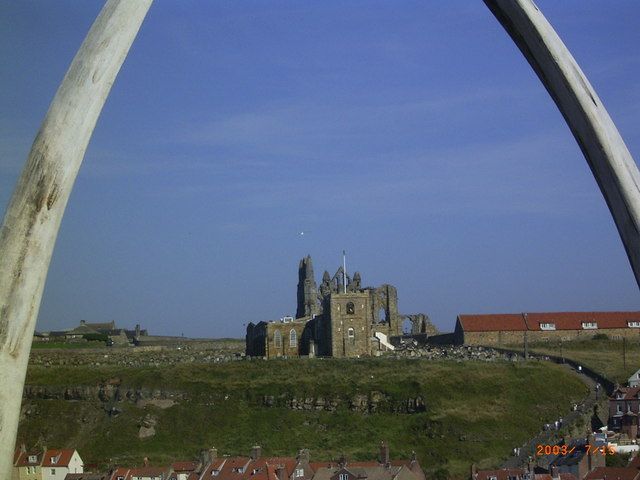About
In the 18th and 19th centuries the whaling industry was thriving in the seaside town of Whitby in North Yorkshire. Dozens of ships braved the Arctic seas off Greenland to hunt these elusive leviathans for their lucrative whale oil. Many of the crews never came back.
Whaling was a chance for great wealth for those who managed a successful catch, but incredibly dangerous. Many boats were capsized and men killed. On a fleet’s return to port, eager onlookers would watch for the telltale sign of good news: Crews would tie a whale’s jaw bone atop the ship’s mast as a sign that they had killed the animal and not the other way around.
To recognize this tradition and the town’s important whaling history, a whale bone arch was erected on Whitby’s West Cliff in 1853. The archway frames a view of the town’s quaint cottages and cobbled streets as well as the ruins of the medeival Whitby Abbey, located across the bay on the East Cliff. (The famous 199 steps leading up to the gothic abbey inspired the setting for Bram Stoker’s Dracula.)
Standing atop the hill under the 15-foot arch backdropped by the abbey is a photo opp few visitors to Whitby can resist. Next to the arch is the town’s other claim to fame a statue (aside from its fish and chips): a statue of the explorer Captain Cook, who learned seamanship as an apprentice here in Whitby.
Picturesque though it be, the current whale bone arch in Whitby is not the original; it’s actually the third arch to stand in this spot. In 1963 the original whale arch was replaced by 20-foot jaw bones from a 113-ton Fin whale killed by a Norwegian whaling ship.
After withstanding decades of East Coast storms and gales, by the 1990s the arch was so weathered it was at risk of crumbling, so was taken down and replaced in 2003 by the present-day whale bone arch, which came from a Bowhead whale killed legally by native Alaskan Inuits. The original bones were given to the Whitby Archive Heritage Centre as a symbol of the risky trade.
Related Tags
Community Contributors
Added By
Published
August 16, 2016





















































